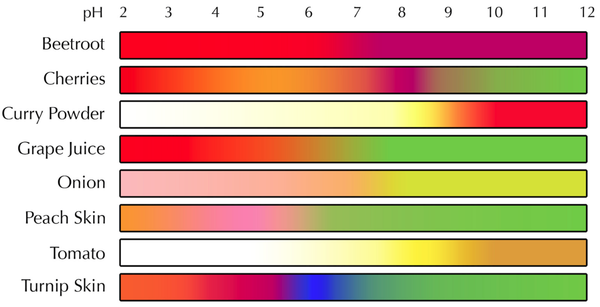Difference between revisions of "Indicator (Chemistry)"
| Line 9: | Line 9: | ||
*[[Biuret Solution]] - Used to detect proteins. | *[[Biuret Solution]] - Used to detect proteins. | ||
*[[Benedict's Solution]] - Used to detect simple [[sugar]]s like [[glucose]]. | *[[Benedict's Solution]] - Used to detect simple [[sugar]]s like [[glucose]]. | ||
| − | + | *[[Limewater]] - Used to detect [[Carbon Dioxide]]. | |
===About pH Indicators=== | ===About pH Indicators=== | ||
: The [[colour]] of a '''pH indicator''' can be used to tell the [[pH]] of a [[solution]]. | : The [[colour]] of a '''pH indicator''' can be used to tell the [[pH]] of a [[solution]]. | ||
Revision as of 17:21, 3 December 2018
Key Stage 3
Meaning
An indicator is a dye that changes colour when other chemicals are present.
About Indicators
- Some indicators detect pH but others can be used to detect other chemicals.
Some non-pH indicators you should know:
- Iodine Solution - Used to detect starch.
- Biuret Solution - Used to detect proteins.
- Benedict's Solution - Used to detect simple sugars like glucose.
- Limewater - Used to detect Carbon Dioxide.
About pH Indicators
- The colour of a pH indicator can be used to tell the pH of a solution.
- Different indicators will have a different range of colours for different pH values.
- A good indicator can be added to solution without affecting the pH of the solution. If an indicator change the pH of a solution it could not give an accurate reading.
Some pH indicators you should know:
- Litmus Paper
- Red Cabbage Indicator
- Universal Indicator
- Phenolphthalein
- Methyl Orange
- Bromothymol Blue
